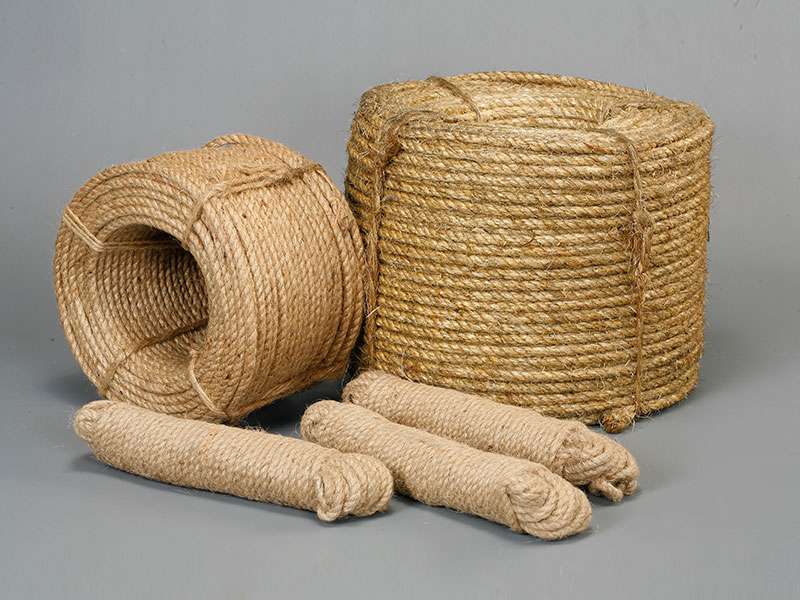

Hemp and jute are the most prominent names for organic and green products today. With these fibers, several industries—including fashion and construction—have advanced to become ecologically friendly alternatives on the market.
But what differentiates hemp and jute? Are they the same thing, or are there differences between the two that make each special? Understanding these materials is crucial for searching for a hemp rope supplier.
If you are still puzzled about whether jute and hemp are the same thing, you are in the right place to get the best information. Even though hemp and jute are similar in several ways, you should be aware of several critical differences between jute and hemp to make an informed choice of fiber and ropes.
First, it would be beneficial to remember that hemp and jute have quite a few similarities; they are both natural materials with this earthly, rustic look and eco-friendly. However, the essence of these two friendly fibers is the primary distinction between them in that one is derived from plants. Hemp, botanically termed Cannabis sativa, is a hardy crop adapted for farming for thousands of years due to its valuable stalks and seeds, as well as medicinal and industrial properties.
However, jute, which belongs to the Corchorus genus, is a subtropical plant famous for the soft, silky, and glossy plant fiber known as jute. Both hemp and jute are eco-friendly, and due to their different qualities, they are intended for use in various sectors to provide customers and industries with various green products.
Over the years, people have grown hemp, also known as cannabis, because it is one of the most flexible plants. But hemp can be used for many things, and its flexibility can't be argued with. Hemp fibers are mostly known for strength but can also be used in construction, fabric, fiber, and rope.
Jute, also known as "Golden Fiber," is produced from the stalks of flowering plants of the Corchorus family. This product has mainly been grown in tropical areas; however, India and Bangladesh are the biggest producers of this material. Jute plants also grow very fast, and their stems are high in cellulose; hence, their fibers are solid and long-lasting.
What is jute made of? Jute is a natural cellulose and lignin fiber obtained from the Corchorus Olitorius and Corchorus Capsularis plants. It is commonly called the golden fiber due to its yellowish hue and cheap cost. These long, soft, and shiny plant fibers originate from Southern Asia and Africa and have been used since ancient Egyptian civilization. Presently, jute fibers are used to produce Jute Rope, twine, burlap, various textile products, rugs, and handicrafts and are known for their coarse thread.
On the other hand, Hemp belongs to the Cannabis family that is Sativa L. Worn for clothing for over 10,000 years, different types of hemp fibers do not include jute, which is famous for its medicinal properties, such as controlling the symptoms of anxiety, Alzheimer's, and inflammation in the body. The versatile soft fibers of hemp have several potential uses, including but not limited to rope, paper, clothes, textiles, animal feed, and building materials.
Jute and hemp are derived from different plant materials but have the same strength. They are both solid; however, it has been reported that hemp is somewhat stronger than jute and possesses an average tensile strength of 250 MPa, while the tensile strength of jute is 200 MPa (1 MPa = 1 million pascals). This makes sense when you consider the utilization of hemp as a construction material.
Jute rope refers to the fiber from the jute plant, which is twisted together to form a string. It is often used as craft twine when wrapping since it is long, soft, and shiny. Jute rope is environmentally friendly, as its raw materials decompose naturally from plants.
Hemp rope is manufactured by spinning hemp plant fibers. The outer portion of the hemp stalk is made of natural fibers that are ideal for rope making because they are resistant to rotting, mildew, molds, and UV light.
Selecting jute and hemp ropes for your project is not a tough decision because the fibers are nearly identical. For instance, hemp and the Twisted Jute Rope are ideal ropes used in the garden, food preparation, landscape use, crafting, and nautical or general outside use. If, however, the application in question requires the most robust natural rope, it will be necessary to use hemp. Hemp ropes swell less when wet compared to jute; thus, in case you have a problem with swelling, hemp might be the most suitable rope for water or water-related use. The difference in their general use and origin is distinguishable; however, jute and hemp rope are similar in that they help you in several ways.
Also Read: Hemp rope vs Cotton rope
Industrial hemp and jute are versatile fibers with characteristics befitting a greener and better future. In recent years, all sorts of industries have moved towards eco-friendly synthetic materials and natural-origin materials with extra strength and durability. Use natural and biodegradable products like hemp if you require new furniture, clothes, paper, domestic accessories, or rope. While these two materials are very similar, hemp has some essential advantages in a few key areas.